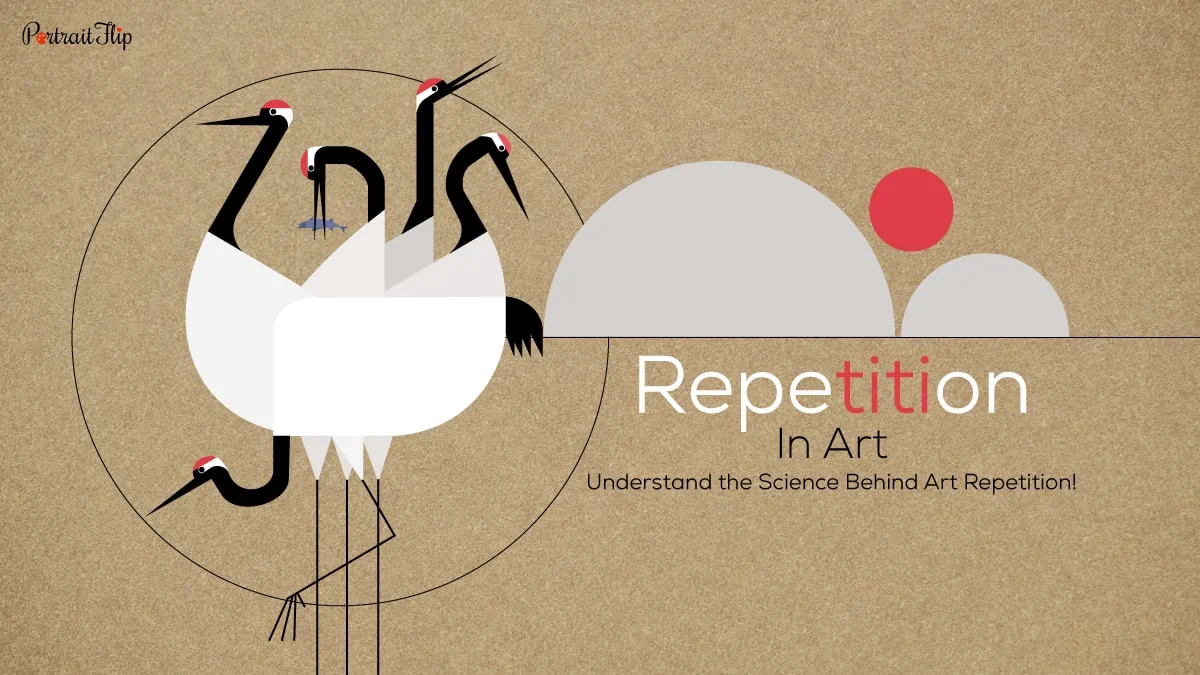The commonality between the world’s famous artworks—The House of Parliament (Sunset), The Milkmaid, and Starry Night over the Rhone—is that they show the characteristics of repetition.
What does that mean?
In Claude Monet’s painting, you’ll see the same color used for the sky and the river.
That means there’s color harmony, something that is common in many landscape artworks.
Let’s take a look at the second artwork: The Milkmaid
A bright blue color appeared twice, on the woman’s apron and on the cloth placed at the table’s edge.
Further, Vincent Van Gogh’s artwork shows the repetition of stars in the sky from one end to another.
They don’t appear in a straight line but create rhythm and balance—in simple terms, a stunning visual experience.
But how?
What exactly repetition in art is, and how the world’s most famous painters, like Gustav Klimt, Piet Mondrian, Claude Monet, and others, made various visually appealing works of art using repetition.
Let’s discuss the role of repetition in art and learn how it creates different visual effects.
Table of contents
What is Repetition in Art?
Repetition is a principle of design that closely works with other principles like patterns and rhythm.
If you see art elements like line, shape, color, or texture being repeated in a composition, it implies that the repetition is used.
Repetition may produce monotonous effects, but it was popular in various art periods, including Cubism, Modern Art, and Impressionism.
The most crucial role repetition plays in artwork is to create emphasis, adding meaning to a composition.
But since when did painters begin using repetition in art? How did some famous modern and impressionist artists start using the repetition principle?
Let’s find out!
Also Read: Form in Art
History of Repetition Art
Repetition in art may have existed for a long time. But since we have no record of how long it was in existence, we could only guess that it existed from the beginning of the 19th century.
We saw the repetition principle in post surrealism art and Claude Monet’s work, including Haystacks and the House of Parliament series.
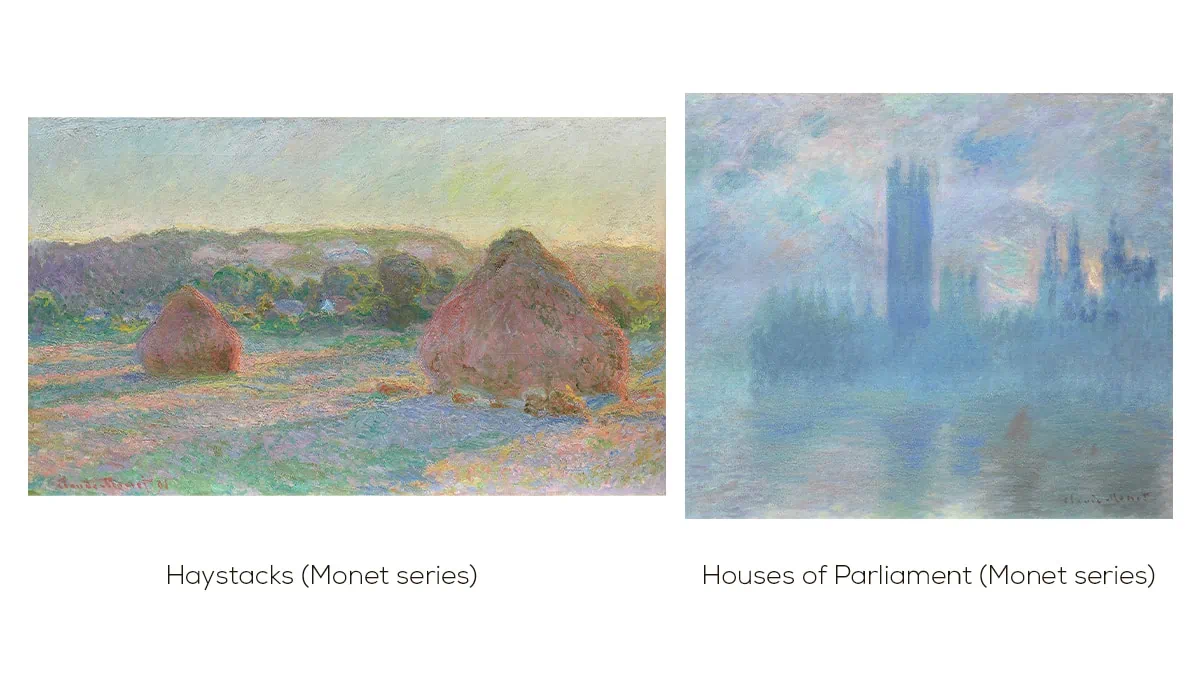
Over the years, we saw repetition principles being used in various art periods in different senses and purposes.
Which was done with the use of lines, shapes, and colors.
It reached new heights when the famous American artist, Andy Warhol, came into the picture.
He used this art tool to produce work, influencing other pop artists.
Several painters came forward and implemented this technique, producing art that left an indelible mark on newer generations.
Over the years, various types of repetition in art have been discovered. But before we jump to this, let’s learn about the connection repetition shares with pattern and rhythm.
Repetition, Pattern, and Rhythm
The technique that lets artists repeat art elements over and over within a composition is called repetition, whereas pattern in art is a whole new design formed because of the repetition of the same elements.
The other art principle, rhythm, is what you feel and sense, which is produced between the intervals of two art elements.
It’s the effect, a sense of movement, and an experience you get when you look at the composition.
As mentioned above, some find repetition an approach to making a composition monotonous. But repetition produces patterns that bring unity to art.
Patterns make the work active by increasing the visual excitement.
How an artist ties one element to another, reusing the same elements, is how rhythm is created.
Repetition doesn’t directly create rhythm. The repetition of elements and patterns creates rhythm.
Let’s jump to types of repetition and learn how patterns and rhythm are produced!
Types of Repetition in Art
There are mainly five types of repetition in art: regular, irregular, alternating, progressive, and radiating.
You’ll see repetitive colors being used on one artwork, whereas asymmetrical shapes are being used in an unorganized manner on the other.
Different types of repetition techniques helped artists create a myriad of different visual effects and enhance their uniqueness.
Here’s a summary of those five types of repetition:
1. Regular Repetition
The most common type of repetition is regular, in which art elements are placed in a sequence—in a proportionate space and in an even manner.
Here are the characteristics of regular repetition:
- Follows sequence
- It depends on consistency to create an effect.
- Produces calm vibe
- Is predictable yet eye catching
- Easy to follow and create
Regular repetition adds serenity and a pleasing feeling to the composition. There’s no scope for chaos in this, unlike some other types of repetition.
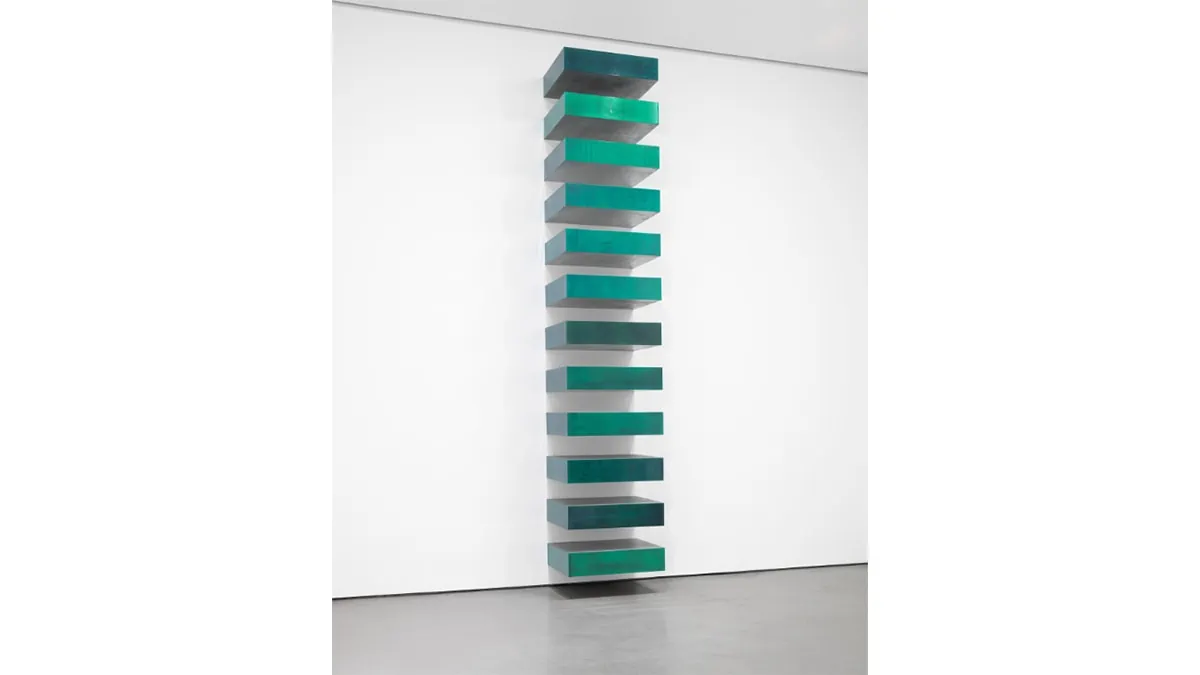
If you look at Donald Judd’s art, Untitled (Stack) (1967), you’ll see how perfectly twelve rectangular boxes are piled up one after another with equal space in between.
The arrangement produces regularity, which is being done through the experimentation of colors, shapes, and textures.
2. Irregular/Random Repetition
The second most common type of repetition in art is irregular.
When you randomly place the same element of art, it’s called irregular repetition.
Unlike the regular repetition art principle, it allows artists to place art elements in an uneven position.
Here are the characteristics of irregular repetition:
- Doesn’t follow any sequence
- Is unpredictable and complicated
- Can be chaotic to some extent
- Promotes variations
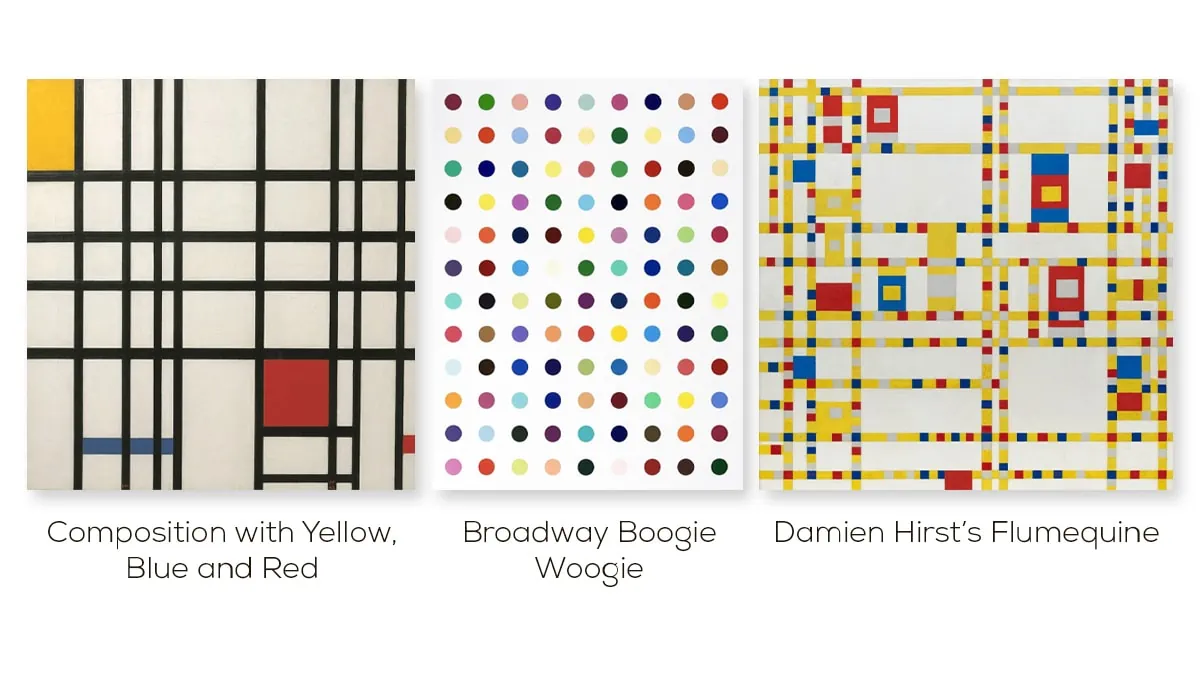
Irregular repetition art examples can be seen in the famous Dutch painter’s works Blue and Red (1937-1942) and Broadway Boogie Woogie (1942-1943), and Damien Hirst’s Flumequine.
Piet Mondrian’s first artwork showed irregularity through colors and lines.
Although the black and white color has a calm vibe, the artwork contains a blue strip and a red box in an unexpected position.
The other two artworks show similar effects with a few adjustments to the way art elements are used.
3. Alternating Repetition
With this repetition technique, one can create endless artworks because it allows artists to use contrasting colors in similar arrangements or patterns.
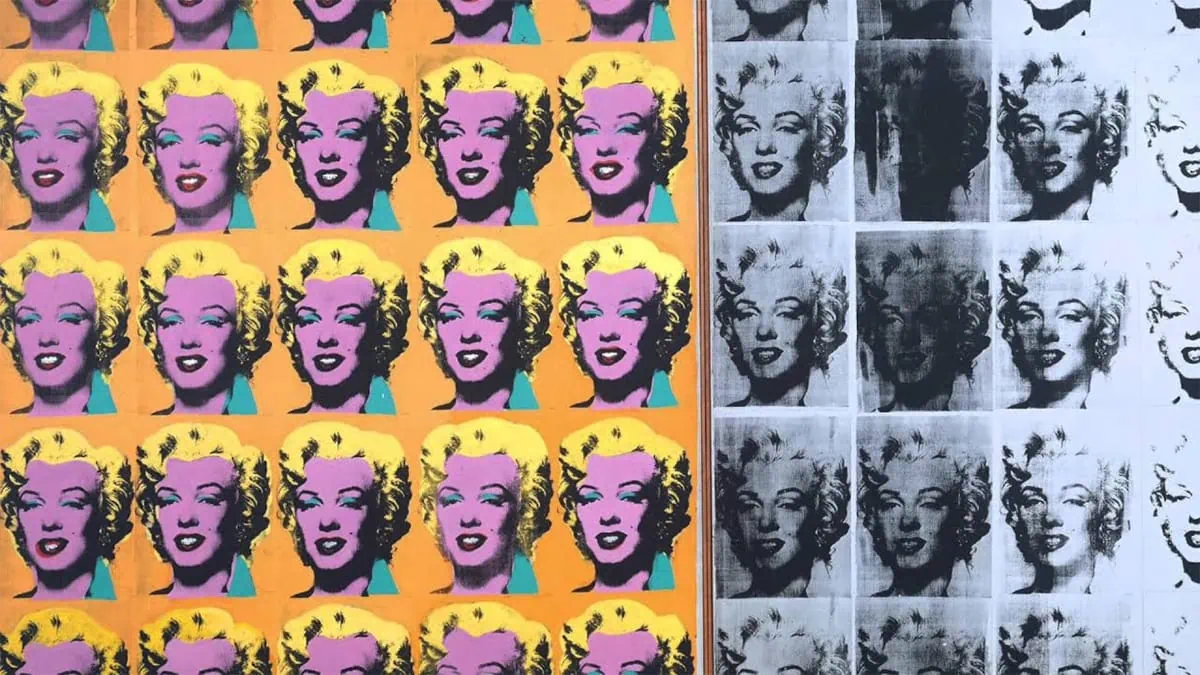
Here are the characteristics of alternating repetition:
- Creates compositions ranging from bizarre to well-organized
- Complicated yet playful
- Difficult to create
- Needs expertise, sense of knowledge, and experience
You put different art elements in a row and make your composition sound like alternating repetition.
4. Progressive Repetition
Progressive repetition is a pattern oriented technique focused on producing rhythm in a composition.
Here are the characteristics of progressive repetition:
- Follow pattern, sequence, and flow
- Produces rhythm and unity
- Showcase momentum and activity
Rhythm created because of progressive repetition produced a whole new shape; this characteristic is of futurist art.
In this repetition in art, you’ll see elements varying in size or shape.
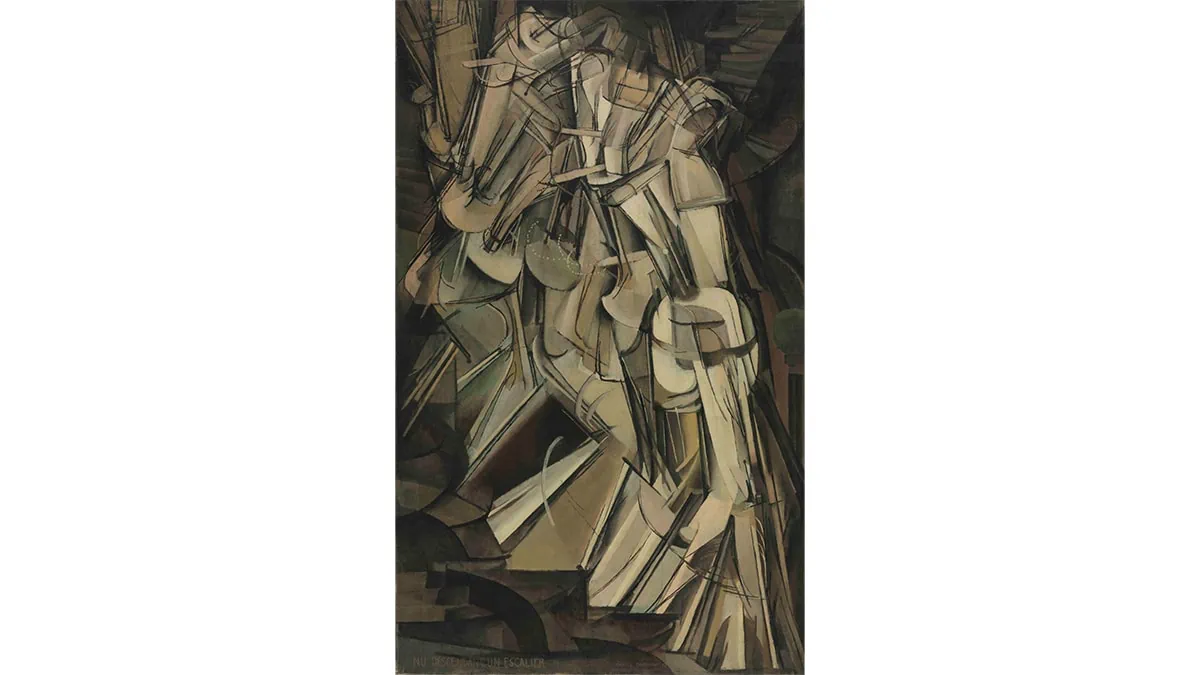
Popular nude artwork, Nude Descending a Staircase, makes the perfect example of alternating repetition.
Conical and cylindrical elements are brought together to make the figures look abstract and in motion.
The famous Cubist painter Marcel showed the figures walking down the staircase, which was the emphasis in the art.
5. Radiating/Emanating Repetition
Radiating is one of the new forms of repetition in art.
The highlighted images appear out of center.
Emanating outwards makes the composition complete, vibrant, and appealing.
Here are the characteristics of radiating repetition:
- It can be made either with paint or 2D dimensional canvas.
- Art is rare and utterly captivating
- Mainly done with shape and color
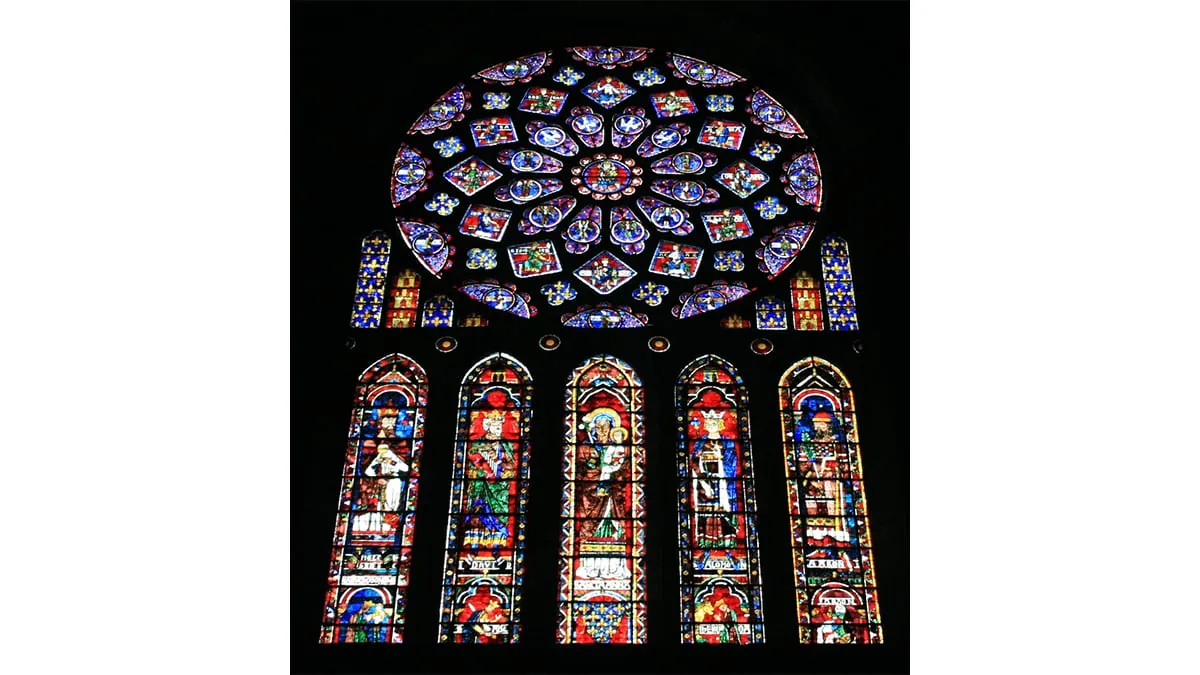
There aren’t enough examples where radiating repetition is shown, but the artwork in North Rose Window demonstrates the emanating.
The central figures, the Virgin Mary and Jesus Christ, have images of prophets and kings surrounded by them, which are shown progressing away from the center point.
Conclusion
Repetition is a design principle that can either make or break your composition, depending on your expertise and knowledge.
One crucial thing it produces is movement, which results in the creation of rhythm.
Let me tell you, nobody can overlook rhythm.
It makes an entire composition visually appealing and balanced, thus making it stand out.
Remember, using art elements over and over isn’t sloppy work; it’s art. It’s widely accepted and embraced as long as it conveys deeper meaning and captivates art lovers.
Frequently Asked Questions
The technique that lets artists repeat art elements over and over within a composition is called repetition in artwork.
Regular, irregular, alternating, progressive, and radiating are the five types of art repetition.
In repetition, you’ll see different elements of art being repeated in a composition. Replication means an entire composition is duplicated—perhaps in a different medium or art style.
There are many that demonstrate different types of repetition. Out of all, Claude Monet’s artworks make the best example of the repetition principle, especially the Haystacks series.



